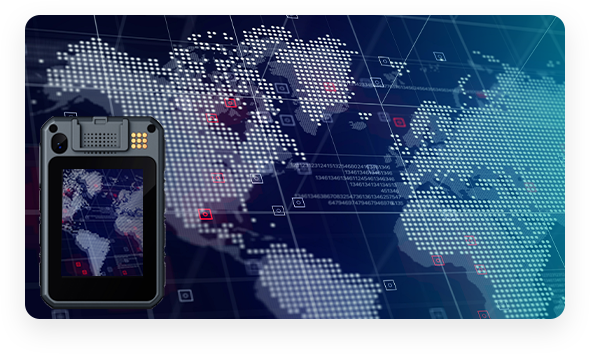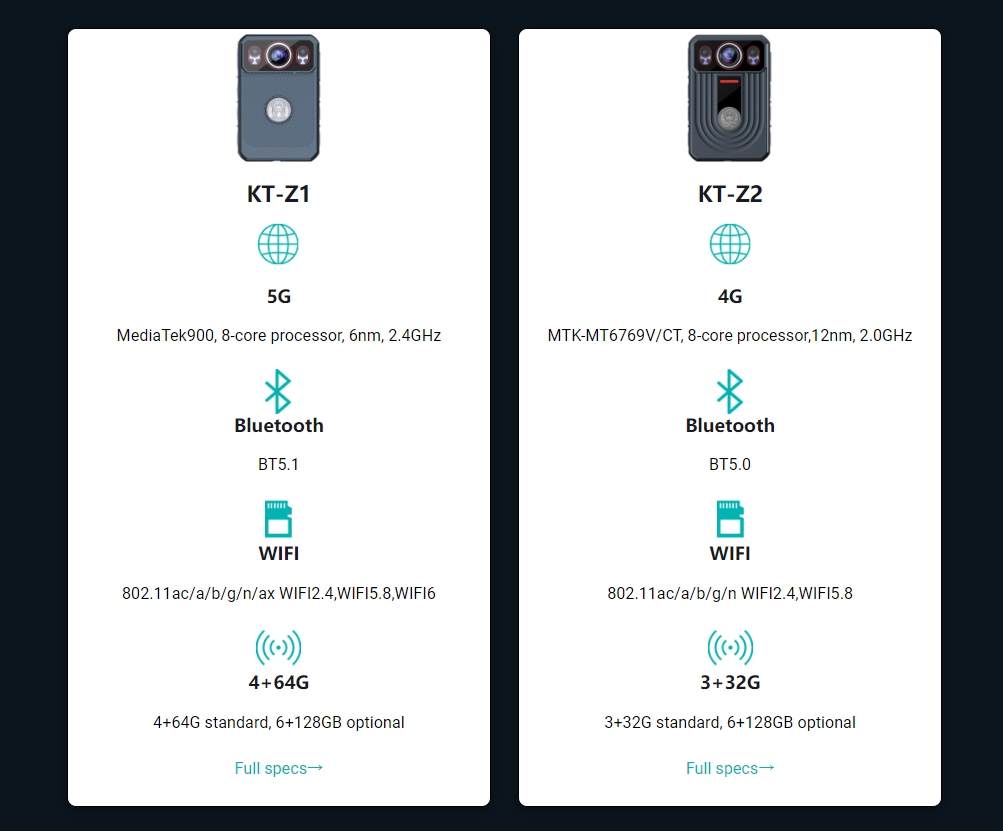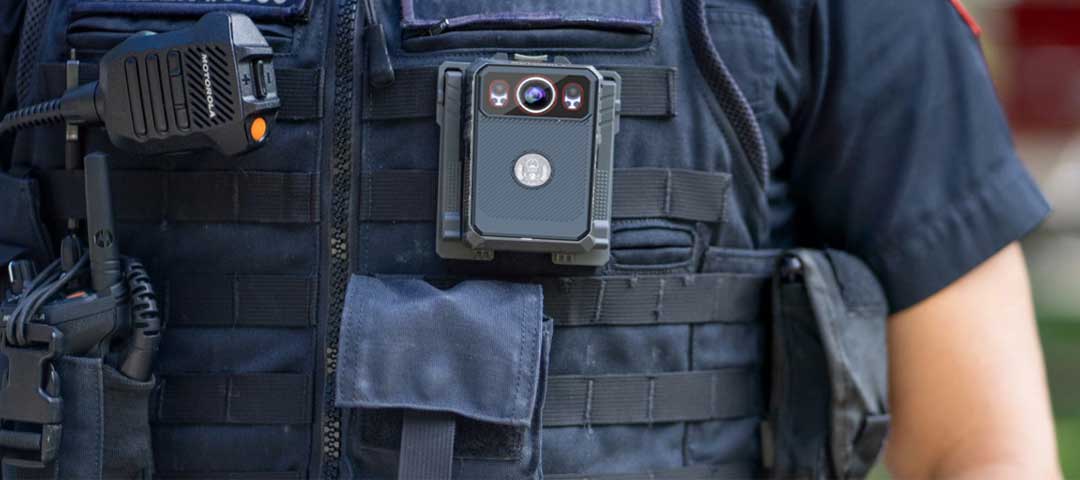Introduction
In an increasingly complex and dynamic world, security officers play a pivotal role in safeguarding public spaces, businesses, and events. To enhance safety, accountability, and transparency, security officer body cameras have emerged as a powerful tool. These wearable devices provide an objective record of security incidents, interactions, and interventions. In this blog post, we will explore the benefits, challenges, and implications of security officer body cameras. By delving into this technology, we can gain a deeper understanding of its impact on security practices and the communities they serve.

The Benefits of Security Officer Body Cameras
1.1. Deterrence and Prevention
Security officer body cameras serve as a powerful deterrent to potential wrongdoers. The knowledge that their actions are being recorded significantly reduces the likelihood of individuals engaging in criminal activities or disruptive behavior. The presence of body cameras creates a sense of accountability, as individuals are aware that their actions will be captured and reviewed if necessary. This heightened sense of scrutiny and the increased perceived risk associated with illegal actions act as strong deterrents, discouraging potential wrongdoers from committing offenses. By fostering a safer environment and reducing the incidence of criminal behavior, security officer body cameras play a vital role in prevention efforts.
1.2. Enhanced Officer Safety
Security officer body cameras play a critical role in ensuring the safety of security personnel. The footage recorded by these cameras serves as invaluable evidence in the event of altercations, assaults, or incidents. It enables security officers to document threats, identify potential risks, and analyze critical incidents to enhance future response strategies. The captured footage also facilitates training and education programs for security officers, allowing them to learn from real-life scenarios and improve their de-escalation techniques and response protocols. By providing a comprehensive record of events, security officer body cameras contribute to the overall safety and professionalism of security operations.
.jpg)
1.3. Objective Evidence Collection and Documentation
Body cameras provide a reliable and unbiased account of events, ensuring accurate documentation of incidents. The recorded footage serves as crucial evidence in legal proceedings, playing a significant role in establishing the facts of a case and supporting the testimony of security personnel. By presenting objective evidence, body camera footage strengthens the credibility of security officers and enhances the chances of successful prosecutions. It offers a visual record that can provide clarity and context to complex situations, enabling judges, juries, and legal professionals to make informed decisions based on the accurate representation of events. The use of body camera footage in legal proceedings contributes to a fair and just legal system.
1.4. Accountability and Transparency
The use of body cameras by security officers reflects a commitment to transparency and accountability. These devices create an objective record of interactions between security personnel and the public, promoting fair treatment and adherence to professional standards. The presence of body cameras cultivates a culture of accountability among security officers, as they are conscious that their actions are being recorded and can be reviewed if necessary. This heightened awareness encourages security officers to uphold their responsibilities and conduct themselves in a manner that aligns with ethical and professional standards. By fostering transparency and accountability, body cameras contribute to the overall integrity and effectiveness of security operations.
Challenges and Considerations
2.1. Privacy Concerns
The use of security officer body cameras indeed raises valid privacy concerns. To address these concerns, it is essential to establish clear policies and guidelines regarding the appropriate usage and activation of cameras, particularly in areas where individuals have a reasonable expectation of privacy. Striking a balance between transparency and privacy is crucial. Policies should outline specific protocols for camera usage, taking into account privacy-sensitive locations and situations. By implementing thoughtful and well-defined guidelines, security organizations can ensure that the benefits of body cameras are maximized while respecting and protecting the privacy rights of individuals within the scope of their operations.
2.2. Storage and Data Management
The storage and management of data generated by security officer body cameras present substantial challenges for security organizations. To address these challenges, investments in secure and efficient systems are necessary to store, manage, and analyze the recorded footage effectively. Policies should be implemented to determine data retention periods, establish access protocols, and ensure the proper handling of sensitive information. Compliance with privacy regulations is of utmost importance, and guidelines should be in place to safeguard the privacy and confidentiality of individuals captured in the footage. By prioritizing secure data storage and adhering to robust policies, security organizations can effectively navigate the complexities associated with managing body camera data.

2.3. Training and Education
Comprehensive training and education programs are crucial to harness the full benefits of security officer body cameras. Security personnel should undergo training on camera usage, including proper activation protocols and privacy considerations. Education should also cover the legal and ethical aspects of body camera usage, ensuring that security officers have a clear understanding of their responsibilities and limitations. By providing thorough training, security organizations can empower their personnel to effectively and responsibly utilize body cameras, maximizing their potential as tools for transparency and accountability. Ongoing education programs can also keep security officers updated on evolving regulations and best practices, ensuring that they maintain a high level of competence in using body cameras.
2.4. Public Perception and Trust
While body cameras contribute to transparency and accountability, their mere presence does not automatically guarantee public trust. Security organizations must actively engage in community outreach and education initiatives to address concerns, build trust, and provide a thorough explanation of the purpose and benefits of body cameras.
Clear and transparent communication is vital in establishing public perception. This includes effectively communicating camera usage policies, data protection measures, and the respect for privacy rights. Security organizations should be proactive in sharing information about when and how body cameras are activated, how data is stored and accessed, and the retention periods for recorded footage.
Engaging with the community through public forums, town hall meetings, and educational campaigns can help address any misconceptions or fears surrounding body cameras. Security organizations should listen to community concerns, answer questions, and provide reassurances about the responsible use of the technology.
Additionally, involving community members in the development of policies and guidelines can foster a sense of ownership and collaboration. This participatory approach allows for a more comprehensive understanding of community expectations and helps ensure that the policies reflect the needs and values of the people they serve.
By proactively engaging with the community and fostering open dialogue, security organizations can bridge the gap between the deployment of body cameras and public understanding. This approach not only builds trust and confidence in the use of body cameras but also strengthens the relationship between security personnel and the communities they serve.
2.5. Integration with Existing Systems
Integrating security officer body cameras with existing security systems and infrastructure can pose technical challenges that require careful consideration during implementation. Compatibility issues, connectivity reliability, and seamless integration with video management systems must be addressed to ensure a successful integration. Close collaboration between security personnel and IT teams is crucial to navigate these challenges and achieve optimal performance. By working together, security personnel and IT experts can identify potential issues, develop appropriate solutions, and ensure that the integration of body cameras with existing systems is seamless and effective. This collaboration is essential for maximizing the benefits of body cameras and leveraging existing security infrastructure efficiently.
2.6. Cost Considerations
Implementing security officer body cameras requires significant financial investments in camera equipment, data storage solutions, and training programs. Security organizations must undertake a thorough evaluation of the costs versus benefits to determine the feasibility and long-term sustainability of implementing body camera programs. Proper budget allocation and resource planning are crucial to ensure the successful deployment and ongoing maintenance of these programs. By conducting a comprehensive cost-benefit analysis and establishing a realistic financial plan, security organizations can make informed decisions and allocate resources effectively, ensuring the efficient and sustainable implementation of security officer body camera initiatives.
Legal Considerations and Policy Implementation
3.1. Legislative Framework
Clear legislative frameworks are essential to govern the use of security officer body cameras. Such frameworks should address critical issues, including activation protocols, notification to individuals being recorded, data retention periods, and access protocols. Legislation should provide comprehensive safeguards against the misuse of camera footage, ensuring that it is used solely for its intended purposes. Consequences for non-compliance or tampering should be established to deter any potential misconduct. By enacting robust legislation, governments can establish a balance between the benefits of body cameras in enhancing transparency and accountability and protecting the privacy and rights of individuals involved.
3.2. Policies and Guidelines
To ensure effective implementation of security officer body cameras, security organizations should develop robust policies and guidelines that align with relevant legislation and address the specific considerations of their operations. These policies should provide clear instructions on camera activation protocols, including when and how cameras should be activated and deactivated. Notification requirements should be outlined to ensure individuals are aware of being recorded. Additionally, policies should address data management procedures, including secure storage, access controls, and retention periods. Privacy protection measures must be emphasized, and repercussions for non-compliance or misconduct should be clearly defined to maintain accountability and professionalism. Such comprehensive policies enable security organizations to establish consistent and responsible practices in utilizing body cameras.
3.3. Collaboration with Stakeholders
The development of policies and guidelines for security officer body cameras should involve collaboration with various stakeholders, including legal experts, privacy advocates, and community representatives. Engaging in dialogue and seeking input from these stakeholders is crucial to strike a balance between the security needs of the organization, the protection of privacy rights, and the expectations of the community. By involving legal experts, organizations can ensure compliance with laws and regulations. Privacy advocates can provide valuable insights to protect individuals' privacy while maintaining transparency. Community representatives can offer perspectives on community expectations and build trust. This collaborative approach ensures that policies and guidelines are comprehensive, ethical, and responsive to the concerns and needs of all stakeholders involved.
3.4. Regular Review and Updates
Policies and guidelines pertaining to security officer body cameras should undergo regular review and updates to keep pace with evolving technologies, legal requirements, and community feedback. Continuous evaluation is crucial to ensure that the use of body cameras remains effective, ethical, and aligned with the goals and values of the organization. By staying informed about advancements in camera technology, changes in privacy laws, and community expectations, security organizations can adapt their policies accordingly. Regular review also allows for improvements in camera usage protocols, data management practices, and privacy protection measures. By embracing a dynamic and responsive approach, security organizations can maintain the relevance and integrity of their body camera policies over time.

Conclusion
Security officer body cameras have the potential to revolutionize security practices by promoting accountability, transparency, and safety. The benefits of body cameras include deterrence, enhanced officer safety, objective evidence collection, and accountability. However, challenges such as privacy concerns, data management, training, public perception, integration, and cost considerations must be addressed to ensure responsible implementation.

To overcome these challenges, a balance between transparency and privacy must be struck. Policies should be in place to regulate camera usage in sensitive areas and establish clear guidelines for data retention and access. Training programs should educate security officers on camera usage, privacy considerations, and legal and ethical responsibilities.
Collaboration with stakeholders, including legal experts and community representatives, is crucial to developing comprehensive policies that consider the diverse perspectives and needs of all involved parties. Regular reviews and updates of policies ensure that they remain relevant and aligned with evolving technologies and legal requirements.
In conclusion, security officer body cameras have the potential to significantly improve security practices. They provide objective evidence, enhance officer safety, and promote accountability and transparency. However, effective implementation requires addressing challenges such as privacy concerns, data management, training, public perception, integration, and cost considerations. With proper policies, guidelines, collaboration, and continuous evaluation, security officer body cameras can contribute to safer communities while respecting privacy rights and fostering public trust.


 French
French German
German Arabic
Arabic Italian
Italian Spanish
Spanish Japanese
Japanese Persian
Persian Korean
Korean Chinese (Simplified)
Chinese (Simplified)









